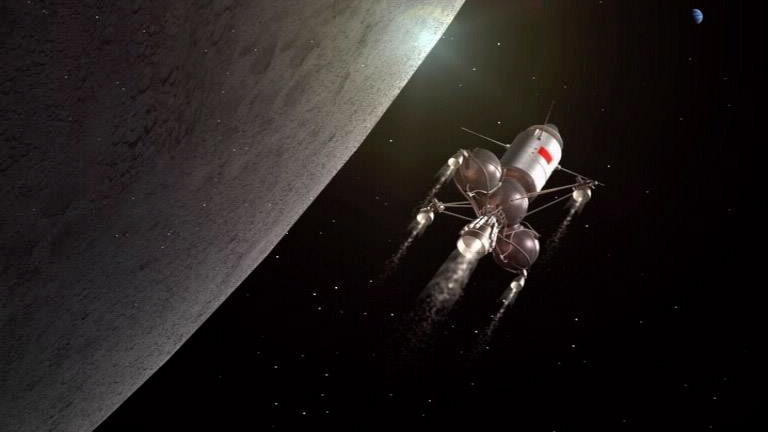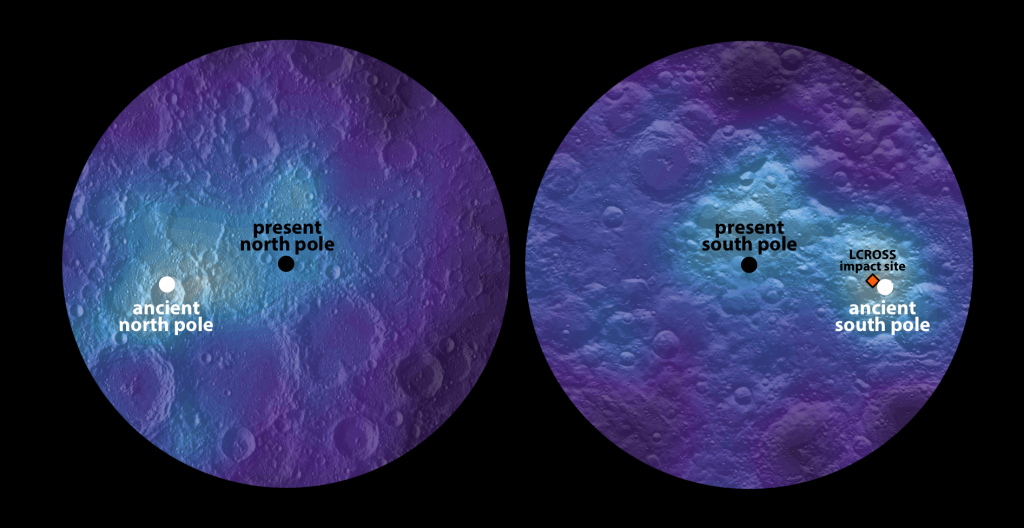China's Chang'e 5 lunar lander is first to find water on the moon up close
Chang'e 5 continues to break new ground.

China's Chang'e 5 lunar lander just marked a historic first: The spacecraft became the first to detect water on the moon at its landing site in real time.
Chang'e 5 found water at its landing site near Oceanus Procellarum on the moon's near side, using an instrument that detects water by determining spectral reflectance measurements of regolith (soil) and rocks.
Water was first definitively detected on the moon from orbit, by India's Chandrayaan-1 mission using NASA's Moon Mineralogy Mapper instrument (following several tentative detections beforehand by other missions and telescopes). The Chandrayaan-1 findings were announced in September 2009, and water has since been extensively mapped from orbit by missions such as NASA's Lunar Reconnaissance Orbiter, which has been operating at the moon since 2009.
Before Chang'e 5, however, no moon mission had found water in real time at the lunar surface. (Apollo astronauts in the 1970s brought home samples containing water, but it wasn't detected until decades later in the lab, after equipment had improved.)
Related: The latest news about China's space program

Also contributing to the gap in water finds was a long wait time between surface missions, as China's Chang'e 3 mission in 2013 was the first to touch down softly on the lunar surface since the Soviet Union's Luna 24 mission 37 years before, in 1976.
Landing missions should accelerate under initiatives such as NASA's Commercial Lunar Payload Services program, which has a suite of missions planned in the coming years. NASA also plans an ice-hunting rover mission called Volatiles Investigating Polar Exploration Rover (VIPER) that will land in late 2023 or so just west of Nobile Crater, which sits near the moon's south pole.
Get the Space.com Newsletter
Breaking space news, the latest updates on rocket launches, skywatching events and more!
Water has a distinctive spectral signature that was expected to show in the measurements from Chang'e 5's lunar mineralogical spectrometer, which was designed to look for water. The challenge, however, was the intense heat at the lunar surface, which at first obscured the measurements, Chinese team representatives said in a press release from the Chinese Academy of Sciences.
The researchers used a "thermal correction model" to account for the heat and then saw the water signature pop out at 2.85 micrometers, the release said. That said, the water found was not much, at roughly 120 parts per million in the regolith and 180 parts per million in a light rock.

The results were confirmed with a sample of lunar regolith that Chang'e 5 returned to Earth in December 2020, making it the first probe to bring back material from the moon since Luna 24 in 1976.
"This [proportion of water] is consistent with the preliminary analysis of the returned Chang'e 5 samples," officials said in the press release.
The surface water is attributed to deposition from the solar wind, the constant stream of charged particles coming from our sun. But there is a more complicated origin story concerning the lunar rock, whose water likely came from the lunar interior.
Analyzing the rock's composition and comparing that with remote sensing from orbit "show that the rock may have been excavated from an older basaltic unit and ejected to the landing site of Chang'e 5," researchers said in the press release.
"Therefore," the release continued, "the lower water content of the soil, as compared to the higher water content of the rock fragment, suggests that degassing of the mantle reservoir beneath the Chang'e 5 landing site took place."
The surface discovery of water is also consistent with volcanic eruptions (which would also have carried water) in the Procellarum region, which carries potassium (K in the periodic table), rare Earth elements and phosphorous, a combination of materials abbreviated as KREEP, researchers said.
Chang'e 5 has also been trying to pin down the age of lunar volcanism using KREEP materials, but an update on that research was not provided in the press release.
China has launched several successful moon missions in recent years, including Chang'e 4, which passed 1,000 days on the far side of the moon (the first such mission to land there) in November 2020. The country plans to send Chang'e 6 to collect samples from the far side of the moon in 2024.
The new Chang'e 5 study was co-led by Honglei Lin and Yangtin Lin from the Institute of Geology and Geophysics at the Chinese Academy of Sciences. The peer-reviewed research was published in the journal Science Advances on Friday (Jan. 7.)
Follow Elizabeth Howell on Twitter @howellspace. Follow us on Twitter @Spacedotcom and on Facebook.
Join our Space Forums to keep talking space on the latest missions, night sky and more! And if you have a news tip, correction or comment, let us know at: community@space.com.

Elizabeth Howell (she/her), Ph.D., was a staff writer in the spaceflight channel between 2022 and 2024 specializing in Canadian space news. She was contributing writer for Space.com for 10 years from 2012 to 2024. Elizabeth's reporting includes multiple exclusives with the White House, leading world coverage about a lost-and-found space tomato on the International Space Station, witnessing five human spaceflight launches on two continents, flying parabolic, working inside a spacesuit, and participating in a simulated Mars mission. Her latest book, "Why Am I Taller?" (ECW Press, 2022) is co-written with astronaut Dave Williams.









